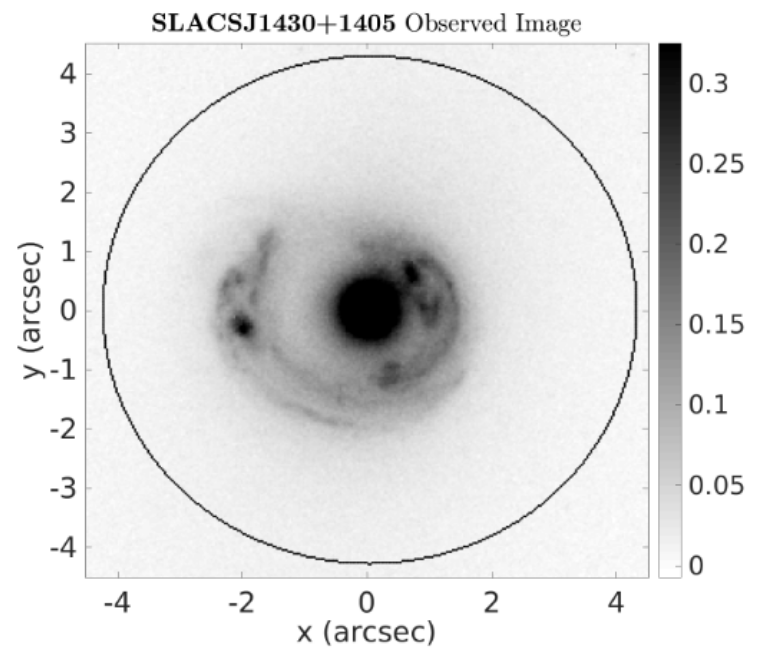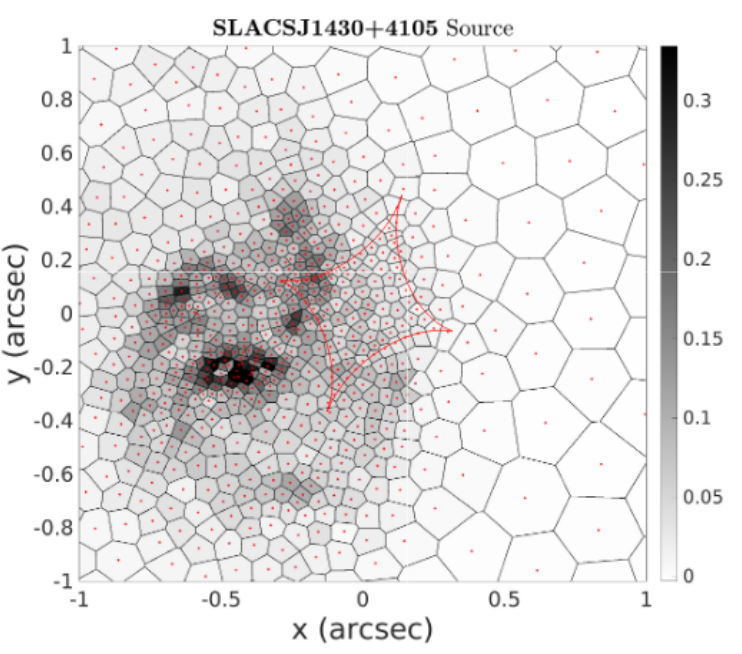CEA News, October 2019
Galaxy structure with strong gravitational lensing: decomposing the internal mass distribution of massive elliptical galaxies
Astronomers at the CEA have recently published a pilot study using gravitational lensing to decompose the mass structure of three massive elliptical galaxies. This study is the first using PyAutoLens, an open-source software package developed in-house at Durham to study the rare phenomenon of strong gravitational lensing.

When two galaxies are aligned perfectly down the line-of-sight to Earth, the background galaxy's light is bent by the intervening mass of the foreground galaxy. Its light can be fully bent around the foreground galaxy, traversing multiple paths to the Earth, meaning that the background galaxy is observed multiple times. This by-chance alignment of two galaxies, called a strong gravitational lens, is rare, but provides Astronomers with an exciting opportunity; to weigh the different mass structures comprising every foreground ‘lens’ galaxy.
An example strong gravitational lens, SLACS1430+4105, is pictured
above (left). The massive elliptical lens galaxy is seen as the
central circular blob of light. The mass and gravitational field
of this object, which weighs over 100 times more than our Milky
Way, bends the light of the background source galaxy into the
“Einstein Ring” of light surrounding the lens galaxy. Using
PyAutoLens,
bespoke software for analysing images of strong lenses, the team
at Durham reversed how the source’s light was bent on its path to
us through the Universe and reconstructed its true unlensed
appearance (right). This revealed a face-on ‘grand design’ spiral
galaxy reminiscent of the awe-inspiring images of galaxies we
take within the Milky Way.

With an understanding of how the lens galaxy bent the source’s light its internal mass structure can be decomposed, whereby each distinct structure is ‘weighed’ separately. In the study, every lens galaxy was found to comprise two distinct stellar components. First, a compact central bulge that was likely formed some ten billion years ago in an extremely energetic and dissipative event. Surrounding every bulge was an extended envelope of stellar material accreted by the galaxy in the billions of years that followed the bulge’s formation. Such bulge-envelope decompositions provide evidence for the ‘two-phase’’ formation scenario of massive elliptical galaxies. In the future, applying this technique to larger samples of strong gravitational lenses will provide new insights on how massive ellipticals form in the context of structure formation throughout the entire Universe.

